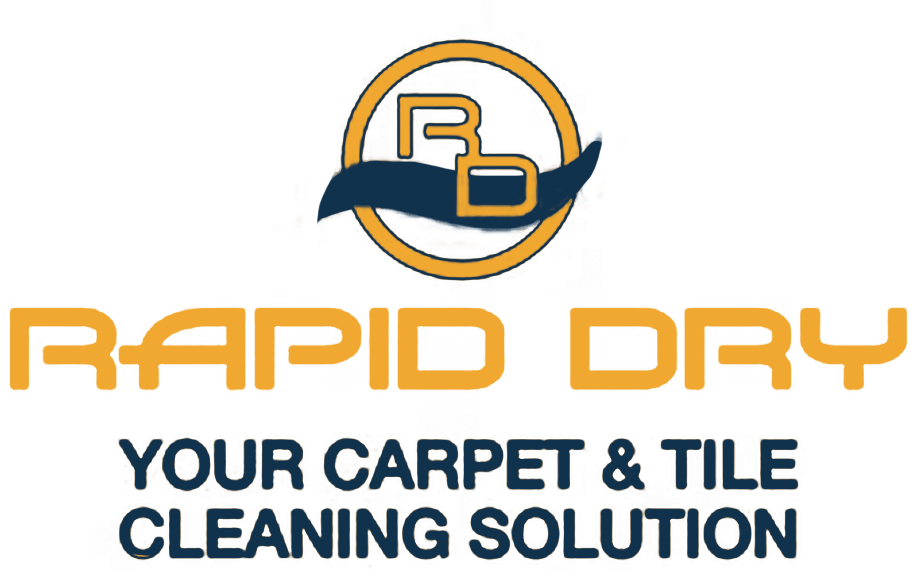
Yes, but for starters, let’s discuss what a logo is and the various types of logos with some examples and explanations. Truthfully, not knowing what it is can be the ultimatum in knowing if it is truly important or not. The more you know, the better off you and your business will be in choosing the right kind of logo or at the very least knowing what you need to talk about with a designer. We will also clarify a few details to relieve any confusion you may have that could be tied to branding. Let’s dig in.
All in all, a logo is a visual representation of your company. It can very easily be confused with a brand, of which we will discuss in just a short moment. But getting back to what a logo is, it communicates a message for you based on your brands collective ambition. Meaning, it is a visual landmark that communicates ownership, and who you or your business is altogether.
Places you would find your logo would include all of your printed and digital assets such as letterheads, social media, the side of a building, business cards, a favicon and more. All to tell the end user where to find you or identify who you are in a crowded space. It is one of the first interactions that anyone would have with your business and serves as an opportunity to make an impactful first impression without you even being present.
In short, a “logo” is a visual landmark. This landmark has the power to generate brand loyalty and commitment like you have never seen. Apple is a great example of this. With the trustworthy service your brand offers, and the quality work you serve, it all adds up and links to your logo. Think of it like storing or saving data on a computer of flash drive, but in this case everything your brand represents and people associate to it are saved to your logo instead. Your current customers and even your future customers will begin to connect the dots automatically and associate your logo to all the positive things you do.
By definition, a logo it is a symbol or other design adopted by an organization to identify what it offers in the form of services, products or something else. It is made up of text and or images. And, a good logo shows what a company does and what its values are. It is the perfect visual landmark or brand mark for a company.
“A logo doesn’t sell (directly), it identifies.”
— Paul Rand
Depending on who you ask, and where you look online, there can be various types of logos. With each type found across the globe, most tend to either revolve around text and or images. Even more so, tend to fall into the below seven categories.
Wordmark or Logotypes
FedEx, Coca-Cola, Netflix, Visa, Google
These logos generally consist of a word or the brand name that it represents. A name that is often Cathy or even turned into a term, such as Google. It is memorable to say the least, and how many people do you know that say they are going to Google that later. Wordmarks are font-based, and are intended to help remind people what their name is.
Monogram, Lettermark or Letterform
Chanel, Adobe, IBM, CNN, HP, HBO
Consisting of letters, such as the brands initials. Often for brands that have long names, such as the National Aeronautics and Space Administration or NASA for short. It is still font-based, and share the same intention as a Wordmark, but focus on simplicity for naming for quick identification and memorization.
Pictorial, Logomarks, Brandmark or Symbols
Nike, Apple, Twitter, Target, Apple
Simply put, it is an icon or graphic based logo. Often the image that comes to mind for a specific brand. Straight to the point and very easily interpreted. Nike, Target and Apple are great examples of this. Just ask yourself what symbol do you see when you think of these brands. You would really only see this successfully completed by a brand that has an established presence though. Newer businesses may not see the same success until much later on or outside of their local community.
Abstract
Toyota, Pepsi, BP, Adidas
Similar to the Pictorial, however instead of being recognizable to or tied specifically to the brands name like Apple, it is abstract or geometric. Instead of being bound to a specific piece or image, they are often more creative and unique. They may even have a hidden message, tell a story or convey some kind of personality.
Mascot
Pringles, KFC, Panda Express
Often consisting of an illustrated character. They add a welcoming personality, and generally appeal to, but not restricted to, a more youthful demographic. The mascot can also live outside of the logo for additional promotional pieces, acting as a sort of ambassador to generate a more family-oriented appeal such as Mr. Peanut or the Kool-Aide man, oh yeah.
Combination
Doritos, Burger King, Lacoste, Taco Bell
Just as the name suggests, it is a combination of elements that form a logo. In this case, typography and graphics or word marks and pictorials. All to make them that much more recognizable. These logos in particular can act as a pathway to leaning solely on a symbol.
Emblem
Harley Davidson, NHL, BMW, Harvard
Often a combination of text inside or part of a symbol or icon. If you are picturing seals, badges or crests then you are heading in the right direction. Some brands such as Starbucks have modernized the emblem, but they are traditionally more rigid and can be less versatile.
With the right logo, you will stand out amongst a crowded group of professionals, because if your business is like the millions of others out there, you have competition and deserve to stand out with something unique. You want to be remembered. With the right typography, color, imagery and more, your logo can be the talk of the town.
“Logos are the graphic extension of the internal realities of a company.”
—Saul Bass
Wrong. But it is a common misinterpretation. A Brand is not a logo, and a logo is not a brand. Your brand in short is a perception. Whereas your logo is part of that branding, serving as a visual anchor to your brand.
A perfect example is Apple. The apple logo is instantly recognizable across the globe. If you were to walk up to someone off the street and ask them what it was, they would immediately tell you what company it is for and what they do or how they serve there customers. Another example would be Amazon and the smiling arrow that points from A to Z. Again, even though it is part of the logo, the smile alone is very easily recognized and tied to the brand. Not mention, it pin points how your order travels from one location to the next, very clever.
What makes Apple and Amazon so easy to recognize? The logo and the consistent usage in their branding and marketing strategy.
Getting right back into the main topic, a logo is important. And without a solid representation of your brand, it could be misleading or your business could be overlooked in a dense and competitive marketplace. A logo needs to align with who you are and feel appropriate to what your business does.
"A logo is not a brand, it's only a symbol for a brand. A brand is much more than a logo."
— Marty Neumeier
With all that said, yes, a logo is important. But the having the right logo matters more over anything else, and JpCS is here to help. Contact us today, or reserve a date and time to talk more about how we can help your business stand out with a logo that meets your brands needs.

Short-form video drives engagement, trust, and sales. Learn why SMBs should embrace video marketing and how to get started affordably with Jpetrous Creative Services.
Read More
Learn how small businesses can maximize marketing impact with limited budgets. See 2025 trends, cost-effective solutions, and strategies that actually work.
Read More
Your website should be a sales engine, not a placeholder. Learn SMB website trends and CRO tactics that boost leads, trust, and growth.
Read More



























Jpetrous Creative Services (JpCS) provides a diverse range of creative services designed to elevate your business. Our primary services include:
Our availability can fluctuate as we do not have any set hours; we are always available via call or email to support you.
Billing is tailored to the service type. À la carte services are invoiced upon project completion, while retainer services are billed monthly and may require a deposit to begin. All services are billed on a Net30 basis to provide flexibility, and we’re committed to accommodating client preferences for a seamless billing experience.
Revisions are a natural part of the creative process, and we’re committed to accommodating reasonable revision requests to ensure your satisfaction. While we aim to gather all necessary information upfront to streamline the process, we understand that ideas and visions may evolve over time. Our goal is to maintain flexibility while balancing high-quality revisions with respect for timelines and commitments to all clients.
Yes, for select services—especially those that are ongoing or long-term, such as Creative Retainer Packages, Creative Consulting, and Social Media Management—a signed contract and deposit may be required. These agreements ensure clear expectations and mutual commitment. Terms can be structured in 3-month increments, with options extending up to 12 months based on your needs.
We take your privacy and data security very seriously. All client information is kept strictly confidential and is never shared or sold to third parties. We follow industry-standard practices to protect your data throughout every stage of the project. For full details, please review our Privacy Policy located in the website footer, or reach out to us directly with any questions about our confidentiality and data privacy practices.
Onboarding ensures we launch with a complete strategy, optimized systems, and a strong foundation. The two-week onboarding phase includes planning, setup, optimization, and alignment across every deliverable.
Yes, we offer exclusive discounts to members of the Anchor Bay Chamber of Commerce, Macomb County Chamber of Commerce, and select other groups. We also have a referral program to help clients save even more. Reach out today to learn about our latest discounts, special offers, and how we can make our creative services more affordable for your business!
Our rates are designed to offer exceptional value while staying within a reasonable budget. We understand that each project is unique, so we provide flexible pricing options, including project-based fees and bundled service packages. Our goal is to work with you to find a pricing structure that best fits your needs and delivers the highest quality within your budget.
We ensure secure, convenient file delivery through both Google Cloud Drive and Dropbox, giving clients easy access to download and use completed work at their convenience. Most deliverables are provided in formats such as PDF, JPG, PNG, MP4, or GIF, tailored to the service type and desired output. For clients who need greater flexibility, we also offer raw files for an additional fee.
Your satisfaction is our top priority. We work diligently to ensure each project meets your standards. If you’re not fully satisfied, we encourage open feedback so we can understand your concerns and address them directly. Our goal is to end each project on a positive note, and we’ll work with you to make any adjustments needed. However, please note that extensive revision time may impact project timelines.
We prioritize clear, accessible communication throughout every project. While we don’t currently have a Client Portal, we maintain open lines of communication through email, phone, and text to ensure that your feedback, requests, and updates are promptly addressed. Initial consultations are typically conducted via Zoom or phone for a thorough project kickoff.